- Home
- Tanith Lee
Hauntings
Hauntings Read online
Hauntings
Kindle edition, published June 2012
by NewCon Press
in association with Un:Bound
Compilation copyright © 2012 by Ian Whates
Introduction copyright © 2012 by Adele Wearing
“Don’t Listen” copyright © 2012 by Ian Whates
“The Cradle in the Corner” copyright © 2012 by Marie O’Regan
“On the Grey Road” copyright © 2012 by Alison Littlewood
“Not a Cat Person” copyright © 2012 by Adrian Tchaikovsky
“Fog on the Old Coast Road” copyright © 2012 by Mark West
“Dark Peak” copyright © 2012 by Kim Lakin-Smith
“The Things I See” copyright © 2012 by Theresa Derwin
“Presence” copyright © 2012 by Paul Kane
“Starcross” copyright © 2012 by Liz Williams
“Forward and Back, Change Places” copyright © 2012 by Marion Pitman
“Long Dene Mill” copyright © 2012 by Sarah Singleton
“The White Otter” copyright © 2012 by Amanda Hemingway
“The Ghost (In Two Letters)” copyright © 2012 by Tanith Lee
“The Scariest Place in the World” copyright © 2012 by Mark Morris
“Simon Harries” copyright © 2012 by Robert Shearman
All rights reserved.
Also available as
ISBN: 978-1-907069-41-3 (hardback)
978-1-907069-42-0 (softback)
Cover art by Ben Baldwin
Cover layout by Andy Bigwood
Text layout by Storm Constantine
eBook design by Tim C. Taylor
Hauntings
Edited by Ian Whates
NewCon Press
England
Contents:
Introduction – Adele Wearing
Don’t Listen – Ian Whates
The Cradle in the Corner – Marie O’Regan
On the Grey Road – Alison Littlewood
Not a Cat Person – Adrian Tchaikovsky
Fog on the Old Coast Road – Mark West
Dark Peak – Kim Lakin-Smith
The Things I See – Theresa Derwin
Presence – Paul Kane
Starcross – Liz Williams
Forward and Back, Change Places – Marion Pitman
Long Dene Mill – Sarah Singleton
The White Otter – Amanda Hemingway
The Ghost (In Two Letters) – Tanith Lee
The Scariest Place in the World – Mark Morris
Simon Harries – Robert Shearman
About the Authors
Hauntings: An Introduction
Adele Wearing
It’s a huge honour as a reader and a fan to be introducing this book of ghost stories, which makes me think that perhaps I should explain how I came to be doing so.
Hauntings the book grew out Un:Bound Video Editions #3 (also called “Hauntings”) which was organised in conjunction with NewCon Press. Held in the atmospheric country pub The Staff Of Life, the event featured five ghost stories read out by the authors. But before I go further, let me go back a little way and, with your indulgence, tell the whole story.
In 2010 I posed the question ‘why are TV book shows so dull’. The then soon-to-be UBVE scriptwriter/director/editor Vincent Holland-Keen pointed out that it’s difficult to make a written medium, such as books, appealing in a primarily visual media. We agreed, however, that it should be possible to do and what’s more, we might perhaps attract a new audience by exposing video aficionados to the stories. In typical Un:Bound style we decided if no one else was doing it we would; and so Video Editions was born.
The initial plan was a magazine style show, so we filmed at the ‘Other Worlds’ event with Alt.Fiction and Tor, recorded interviews and magic tricks at Tor Towers, we even roped Lee Harris and Alasdair Stuart in for news items and a feature on query letters. The end product UBVE#1 Tor – looked pretty good, ran for about 45 minutes and worked as a one off. On reflection we felt the format wouldn’t be so effective for multiple shows and so a rethink was required.
After a few false starts and delays we developed a new plan. Pick a subject, find willing authors who write in that field, couch a round table discussion in a short film. We started with UBVE#2 Zombies. It’s not the first time Leicester has had a Zombie apocalypse, but it’s the first time popular authors have been victims. Now we had a show that was under half an hour and a format with long term potential.
Ghost stories were quickly settled on for UBVE#3. Since the filming of #2 had turned into a mini event with volunteers involved in the filming, and as ghost stories lend themselves so well to being an event, we expanded the remit for #3. Instead of simply inviting authors to be filmed and do the round table, we would find a suitable venue and ask them to tell stories first. We could film the story telling and release it separately from the video edition, but it would be a great way to combine filming with an evening event for fans. Then, because this is Un:Bound and we can’t help ourselves, the idea of an ebook was suggested. As soon as this was mentioned there was only one way to go: Newcon Press. The quality of their anthologies and Ian’s sense of fun were exactly the fit we would need for such a venture. So filming of UBVE#3 would also act as a launch event for the NewCon Anthology ebook featuring the stories told on the night. So Hauntings was born.
Why ghost stories? Not only are they one of horror’s most enduring tropes, but for many of us they are a childhood favourite. I remember being fixated by the Usbourne Guide and books of True Ghost Stories as a child, a fascination that never entirely went away. I spent lunchtimes devouring tales of screaming skulls and killer houses, of ghostly faces in windows (for years I couldn’t pass a darkened window at anything less than a run). Even now, nothing in horror pleases me so much as a good old fashioned haunted house, in book or on film. The ghostly twins in The Shining are still terrifying to me and of all short story collections the ghostly ones are most likely to find a home on my shelves.
Maybe it’s because ghosts can get you anywhere; it’s doesn’t need to be personal and locking the door doesn’t make you safe, but there seems to be a universal appeal to the chill of a haunting. You don’t even have to be a horror fan to love them it seems. Like urban legends, ghost stories are shared and traded growing up, part of the oral tradition that still exists in playgrounds and around campfires. You aren’t required to believe in them, a well told tale will have its effect even on the most determined cynic and they are at their best in more than one format: read privately or out loud to a rapt audience.
With that in mind, here in Hauntings Ian Whates has commissioned a variety of spooky tales, with new and well known authors brought together to send shivers down your spine. Lock the doors, light the fire, pull up the covers and settle in with this fantastic collection of original stories.
Adele Wearing
February 2012
Adele Wearing is fearless leader of Un:Bound and Un:Bound Video Editions. The videos from the ‘Hauntings’ event can be viewed at www.unboundve.com
Don’t Listen
Ian Whates
The following story was initially adlibbed in front of a live audience at The Staff of Life pub in Mowsley, Leicestershire, on Sunday 11th March 2012, built around an idea and a few crib notes. This, the written version, has been produced by listening back to a recording of that performance.
The story I’m going to share with you this evening concerns the composer, Edmund Banaway. Some of you may recall the name, though perhaps not, since f
ame and Banaway were never more than passing acquaintances. He was a contemporary of George Frederick Handel and, indeed, it’s said he was greatly jealous of the other’s success.
For all that, Banaway did enjoy a very brief flirtation with success himself. This was in 1723, at a time when Handel was already established as composer for the Chapel Royal and as a director of the newly founded Royal Academy of Music. Banaway caught the eye, or perhaps in this instance the ear, of a wealthy aristocrat, who offered to become his patron.
Our story really starts as Banaway was on his way to London to meet with his new patron. He was understandably excited, seeing this as his big chance – an opportunity to shine and to gain the recognition which he was convinced his talent deserved. He travelled by coach, choosing to break his journey at an inn en route. The name of the establishment doesn’t greatly matter, but know that this was an old inn, a country inn, with exposed beams, tiled floor, and an open fire, much like the one we’re in now. If you wish to think of it as The Staff of Life, by all means do.
While Banaway sat in the coach, being carried through the rich English countryside made vibrant by summer, he felt inspired by the beauty of the landscape that unfolded around him, and a piece of music began to take shape in his mind. He quickly realised that this unlooked for tune was something special. He knew it to be more beautiful than anything he’d ever written before, or even heard before.
Upon arriving at the inn, Banaway ate heartily – a meal of mutton pie washed down with local ale – but he didn’t linger in the common room, anxious to retreat to his own quarters as swiftly as possible. Once there, he sat down at the small writing desk, spread parchment before him, and began to write. He did so feverishly, like a man possessed, desperate to put down onto paper the music that had come to him so vividly on the journey. As he wrote, he was overcome by a sense of well-being and light-headed delight. The music came easily; it welled-up from somewhere deep within, from his very soul, flowing through his body and along his arm to take shape, via his hand and the quill it held, on the parchment before him. He had never experienced anything like this before: this sense that he was no more than a conduit, merely there to facilitate the birth of the music; and he knew that what he created in that room was magical, beyond anything the world had heard before.
He lost track of time, writing long into the night. Eventually, in the small hours of morning, it was done. Oh, a little work was still needed: orchestration to be added and refinements to be made, but in essence the piece was complete, there on the desk before him.
He went to bed, exhausted but elated.
Because of that exhaustion, he could not have commented on the comfort or otherwise of the inn’s bed. He fell into a deep, deep sleep.
In the morning, when he awoke, the same zeal still burned within him and, naturally enough, the first thing he wanted to do was review his work of the previous night. However, to his dismay, he found that the desk was empty. His masterpiece, the work that was going to secure his place in history, had disappeared.
A whole welter of emotions coursed through him: disbelief, fear, fury. He searched desperately, ransacking the room as his frustration mounted, but to no avail. He roused the landlord and his wife, who joined in the search, though with no more success than he’d enjoyed, and they in turn woke their staff and the other guests. Soon, everyone at the inn was involved. However, the precious score still failed to materialise.
The landlord, determined that no blame should attach to him, instantly dismissed the chambermaid, about whom he’d always held vague suspicions, declaring that she was most certainly the culprit, but the score was still nowhere to be found.
Eventually, still in turmoil, Banaway reluctantly resumed his journey to London without his masterpiece, though he did so with heavy heart. At the first opportunity upon reaching the capital he attempted to recreate the work, to write it again, but whatever muse had visited during the first part of his trip had long since departed. He could achieve no more than a pale shadow of the perfection he had conjured that fateful night.
Sad to say that after this Banaway’s life went into swift decline. The patronage he had so coveted was quickly withdrawn, as he failed to produce any music that satisfied either the aristocrat or himself. The need to recreate that lost score consumed him; nothing else would do. It became an obsession that excluded all else, even such basic needs as physical wellbeing and hygiene. Banaway lost touch with reality and descended into a very dark and dire place, ending his days incarcerated in a mental institution.
But what of the music that so drove the composer? What happened to that precious score which had become both the centre and the bane of his life? The truth is, nobody knows; not with any certainty. The manuscript was never discovered, but many are of the opinion that it never left the inn.
There are two schools of thought for this. Some maintain that the chambermaid had indeed stolen the manuscript and hidden it within the building, intending to reclaim it later; but she was unable to do so having been sacked and banished from the inn. This meant, of course, that the manuscript remained where it was, to moulder and decay in its hiding place, becoming a part of the building’s structure. Others prefer a more pragmatic explanation, believing that the disappearance was due to a twist of fate. It was certainly a warm evening, and Banaway may well have slept with a window open. Perhaps a strong draft disturbed the manuscript, lifting it off the desk so that it fell to the floor and somehow slipped through a crack in the floorboards, to remain undiscovered thereafter.
We simply don’t know.
There is, however, circumstantial evidence that the music did indeed remain there, somewhere within the inn, that it seeped into the substance of the place to haunt it ever more. I say this because, in the centuries since, many people claim to have heard a snatch of music – a beautiful, haunting theme, just at the edge of their perception.
Take, for example, the sad case of Mary Weaver. Those of you who are local to the area may well have heard the name. Mary Weaver was hanged; in 1845, more than a hundred years after Banaway’s fateful stay at the inn. She was hanged for murder. Her victim was one Lizzie Wheeler. The two girls were around the same age and were said to have been firm friends. They worked together at the inn: Mary as chambermaid, Lizzie as barmaid. Both girls claimed to have heard, at different times, these beautiful snatches of music which had no obvious source. The pair became so entranced with the tune that both would hum it as they worked. The problem was that each had heard no more than snatches, and so they would hum a different tune, which, while clearly related to the other, was far from identical.
At first, this was a source of considerable merriment and light-hearted banter between the two, but as time passed attitudes hardened, with each girl claiming that her version was the correct one and that the other had clearly misheard. This led to ever more heated exchanges and growing acrimony, culminating in a blazing row. During the altercation, Mary, in front of several witnesses including the landlord, pushed Lizzie very deliberately and very forcefully down the stairs. Poor Lizzie landed hard, broke her neck, and never moved again.
There are many other anecdotal incidents that seem to support the theory that Banaway’s music may still haunt the inn; including a more contemporary example, which occurred less than fifty years ago, during the ‘Swinging Sixties’. This relates to the pop group Jerry Paul and the Jesters. I’m sure many of you will remember them, and, if you do, there’s a good chance that at this very moment the melody of their classic song, Love Leads Me On, is running through your mind. This, of course, was their big hit, reaching #2 in the charts during the summer of 1965, kept off the top only by the Beatles’ Help! For a while, Jerry Paul and the Jesters enjoyed huge success: they were mobbed in the streets and feted by the media; but their fame was short-lived. They were never able to repeat the success of Love Leads Me On and the fickle attention of media and fans alike soon shifted to the next overnight sensation.
In 1967, a scant t
wo years after the song he’d written and performed had ridden so high in the charts, Jerry Paul was found dead in his hotel room; victim of a heroin overdose.
All this, of course, is well documented. What is perhaps less well known is that Love Leads Me On, the song that had brought Jerry and his band such a tantalising taste of the high life, was written here, in this very pub. Jerry was a local lad, as I’m sure you know, and he wrote the song one evening while sitting in the bar. He wrote it in one take; the tune came to him complete, the lyrics fell into place… It wasn’t quite done – the verses still needed a little refining and there were a few lyrics to be perfected – but the song, in essence, was there.
The problem – and this is according to Jerry’s official biographer – was that Jerry Paul came to hate that song. He despised it with a vengeance, because it wasn’t right. The melody which he incorporated into Love Leads Me On wasn’t quite the tune that he’d thought of while sitting in the bar that night. Close, perhaps, but an approximation all the same.
Jerry spent the rest of his brief life trying to correct his mistake, to get the tune right; a quest that drove him to distraction. In fact, it’s generally accepted that this was the cause of his dabbling with drugs; that he was determined to expand his consciousness and remember that night more clearly, to attain perfect recall and so revisit the snatch of music that had inspired him.
The biographer closes his volume with the dramatic claim that had Jerry not been in the pub to hear that elusive snippet of music, he may still have been alive today.
I could quote many other examples to suggest that something peculiar is present in this pub: a lingering echo of music lost; but none of these are as fully documented as the incidents I’ve mentioned; doubtless because they are less dramatic and so of less interest to those who record the events of history. Therefore, I won’t trouble you with them at this juncture.

 Law of the Wolf Tower: The Claidi Journals Book 1
Law of the Wolf Tower: The Claidi Journals Book 1 Don’t Bite the Sun
Don’t Bite the Sun Tanith By Choice: The Best of Tanith Lee
Tanith By Choice: The Best of Tanith Lee Killing Violets
Killing Violets Day by Night
Day by Night Sabella
Sabella Blood 20
Blood 20 Weird Tales #325
Weird Tales #325 Greyglass
Greyglass Queen of the Wolves
Queen of the Wolves To Indigo
To Indigo Ghosteria Volume 2: The Novel: Zircons May Be Mistaken
Ghosteria Volume 2: The Novel: Zircons May Be Mistaken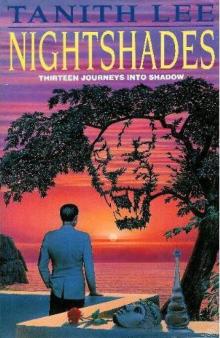 Nightshades
Nightshades Forests of the Night
Forests of the Night Wolf Wing
Wolf Wing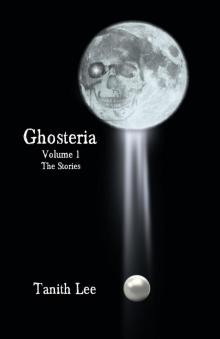 Ghosteria Volume 1: The Stories (Ghostgeria)
Ghosteria Volume 1: The Stories (Ghostgeria) Obsidian: A Decade of Horror Stories by Women
Obsidian: A Decade of Horror Stories by Women The Secret Book of Paradys
The Secret Book of Paradys Red as Blood: or tales from the Sisters Grimmer
Red as Blood: or tales from the Sisters Grimmer The Book of the Damned
The Book of the Damned Faces Under Water
Faces Under Water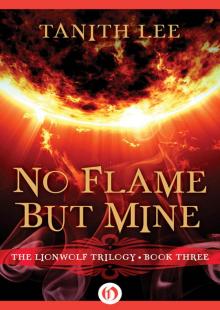 No Flame But Mine
No Flame But Mine Night's Master
Night's Master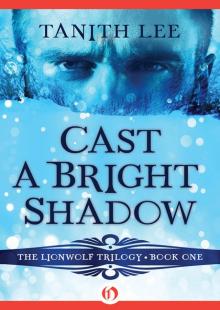 Cast a Bright Shadow
Cast a Bright Shadow Red as Blood, or Tales from the Sisters Grimmer: Expanded Edition
Red as Blood, or Tales from the Sisters Grimmer: Expanded Edition Delusion's Master (Tales From the Flat Earth)
Delusion's Master (Tales From the Flat Earth) Personal Darkness
Personal Darkness The Silver Metal Lover
The Silver Metal Lover Cruel Pink
Cruel Pink Metallic Love
Metallic Love Drinking Sapphire Wine
Drinking Sapphire Wine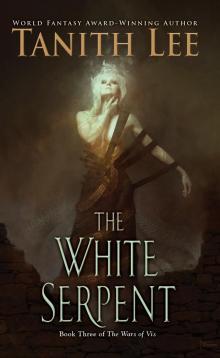 The White Serpent
The White Serpent Louisa the Poisoner
Louisa the Poisoner Don't Bite the Sun (Four-BEE Book 1)
Don't Bite the Sun (Four-BEE Book 1) Turquoiselle
Turquoiselle Death's Master
Death's Master The Storm Lord
The Storm Lord Black Unicorn (Dragonflight)
Black Unicorn (Dragonflight) Redder than Blood
Redder than Blood Dark Dance
Dark Dance Ivoria
Ivoria Night's Sorceries
Night's Sorceries Venus Preserved (Secret Books of Venus Series)
Venus Preserved (Secret Books of Venus Series) Anackire
Anackire A Bed of Earth
A Bed of Earth Red Unicorn
Red Unicorn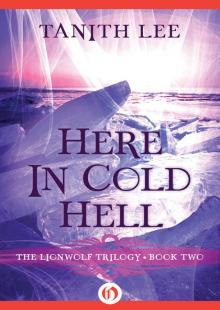 Here in Cold Hell
Here in Cold Hell Shadowfire
Shadowfire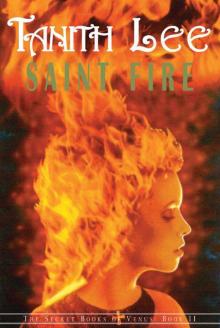 Saint Fire (Secret Books of Venus Series)
Saint Fire (Secret Books of Venus Series) Darkness, I
Darkness, I Death Dances
Death Dances White As Snow (Fairy Tale)
White As Snow (Fairy Tale)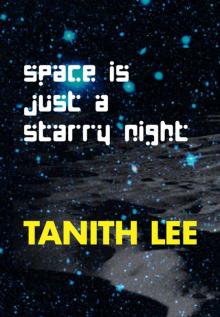 Space Is Just a Starry Night
Space Is Just a Starry Night Biting the Sun
Biting the Sun Hunting the White Witch
Hunting the White Witch Legenda Maris
Legenda Maris Kill the Dead
Kill the Dead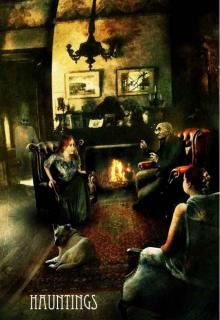 Hauntings
Hauntings Black Unicorn
Black Unicorn Law of the Wolf Tower
Law of the Wolf Tower Disturbed by Her Song
Disturbed by Her Song Delerium's Mistress: Tales of the Flat Earth Book 4
Delerium's Mistress: Tales of the Flat Earth Book 4 Mortal Suns
Mortal Suns The Silver Metal Lover s-1
The Silver Metal Lover s-1 The Book of the Beast
The Book of the Beast Weird Tales #327
Weird Tales #327 The Birthgrave
The Birthgrave